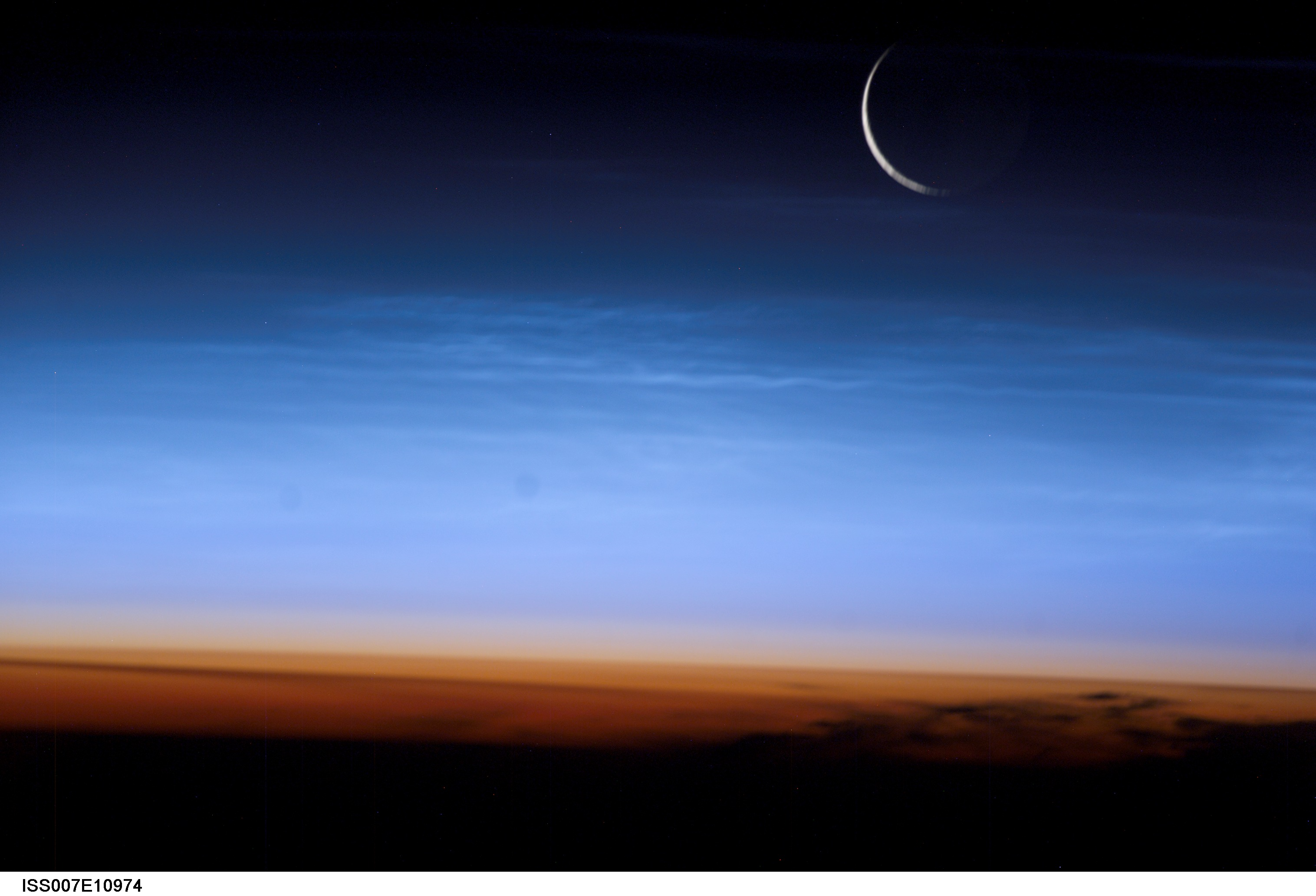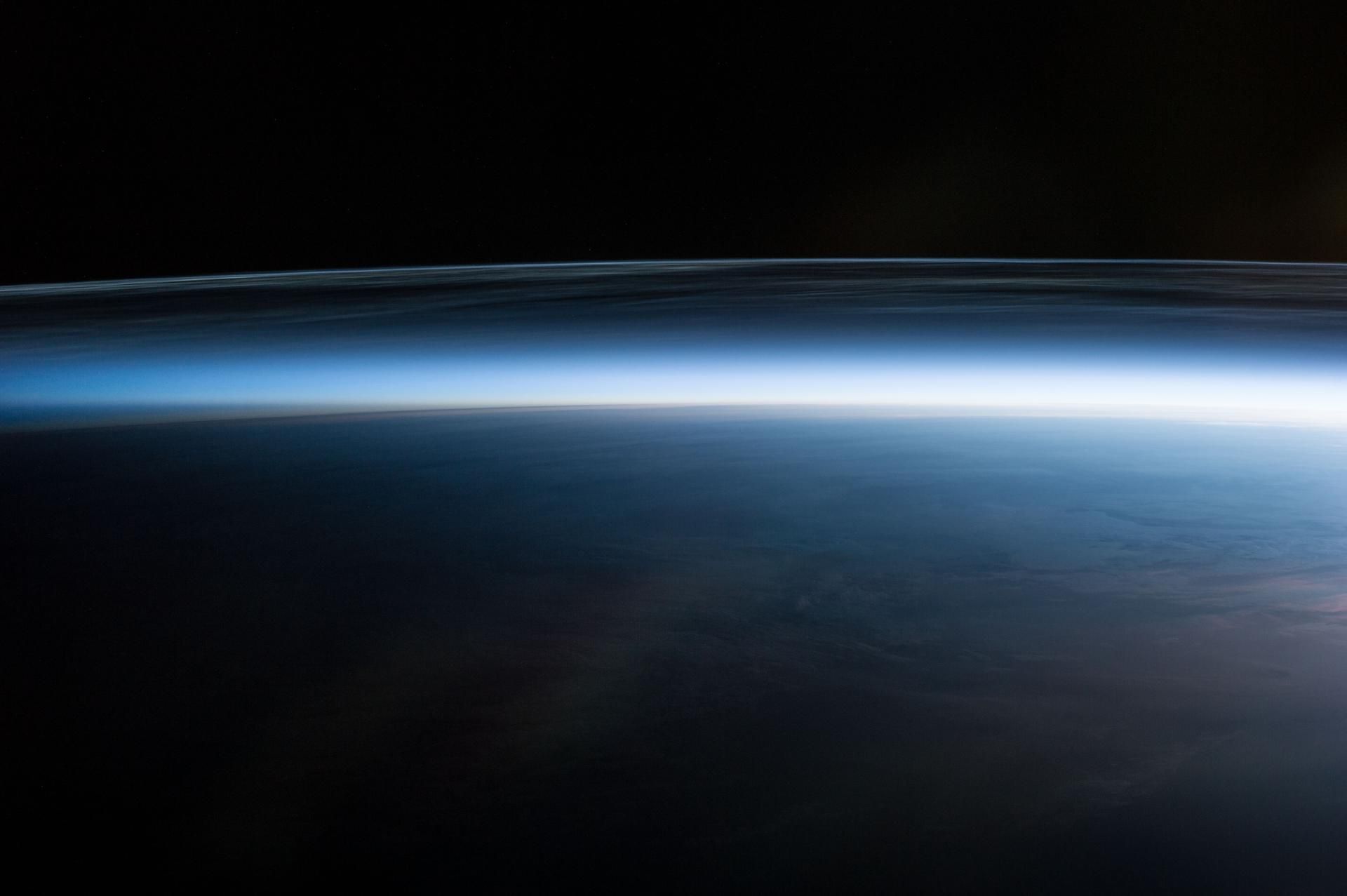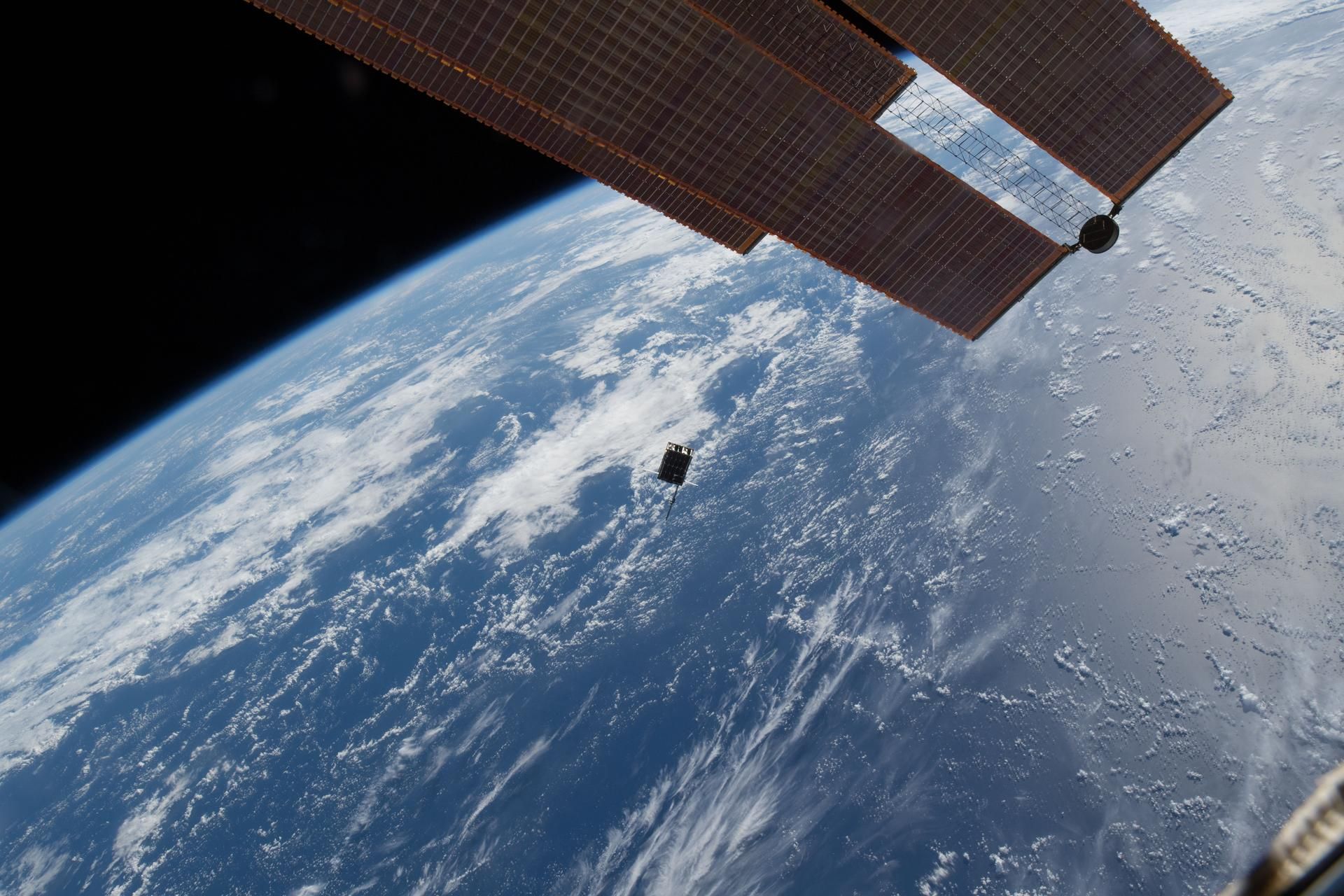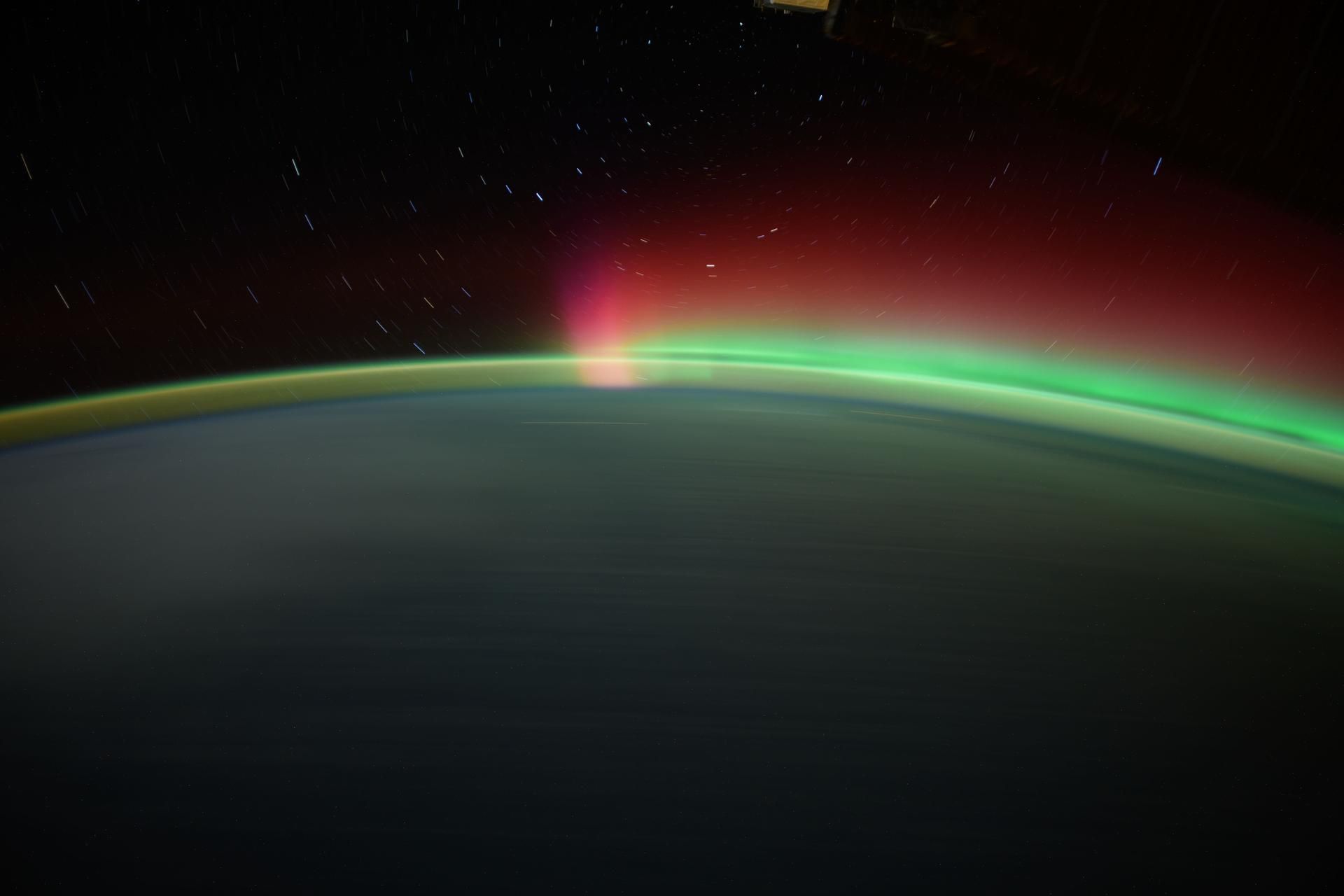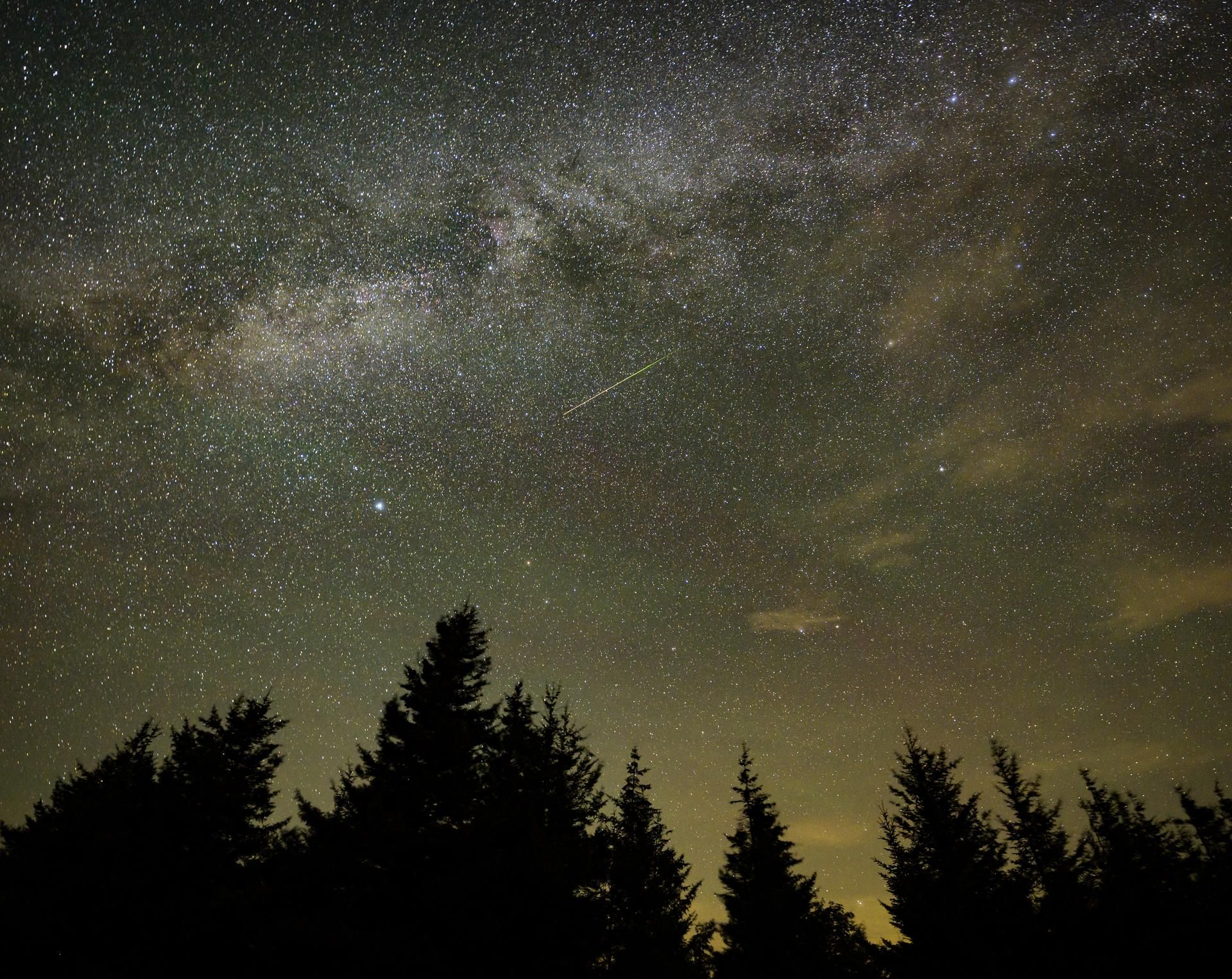When you look at photographs of Earth from space, the planet looks like a blue marble, with patterns of clouds lying on the surface of the marble. It seems as if Earth’s atmosphere is incredibly thin, wrapped tightly around our planet.
In fact, the atmosphere consists of multiple layers, with some scientists of the opinion that the atmosphere extends halfway to the Moon.
The Layers of Earth’s Atmosphere
It’s easy to imagine Earth’s atmosphere as a bubble of air surrounding the planet that abruptly ends with the vacuum of space. The reality is a lot more complex than that. Our planet’s atmosphere is made up of a series of layers, each with its own characteristics.
Troposphere (5 – 9 Miles Thick)
The troposphere is the layer closest to Earth’s surface and is what most of us are probably imagining when we talk about the atmosphere. Tropos is Greek for “change,” so it literally means “sphere of change” which is an accurate description. In this layer, atmospheric changes constantly occur, including almost all of our planet’s weather.
Despite being the smallest layer, nearly all the water vapor in our atmosphere is found in the troposphere. If you’ve ever wondered why it’s always sunny when you’re cruising at altitude in a plane, it’s because you’ve left the troposphere behind, along with most clouds.
In the troposphere, air becomes thinner the higher you get. With lower air pressure, the temperature drops, so the higher you go in the troposphere, the colder it gets.
Stratosphere (22 Miles hick)
Phrases such as “taking off into the stratosphere” make it sound like this must be the highest level of the atmosphere, but it’s actually the second lowest. Stratum is Latin for “layer,” so this is literally the sphere of layers. It gets its name due to the layers of temperature within this zone.
Ozone in the stratosphere absorbs energy from the sun in the form of ultraviolet (UV) radiation, which is then radiated as heat. Unlike the troposphere, where the temperature drops the higher you go, the temperature steadily increases as you move up through the stratosphere, from around -60F (-51C) just above the troposphere, to around 5F (-15C) as it nears the mesosphere.
Since there is very little water vapor in the stratosphere, there are few clouds, which only form close to the poles during winter. Ice crystals within these polar stratospheric clouds (PSCs) can interact with the sunlight to create stunning waves of color visible from the ground.
Mesosphere (22 Miles Thick)
Meso is Greek for “middle” so this is literally the middle sphere. Despite being trapped in the middle, the mesosphere is the coldest layer of Earth’s atmosphere, with temperatures as low as -130F (-90C) at the very top of the mesosphere. This is because the density of gas in the mesosphere is lower than the two layers beneath it, which can absorb more solar energy. However, the mesosphere is also not as exposed to high-energy solar radiation as the thermosphere and exosphere above it.
As with the troposphere, the temperature in the mesosphere gets colder the higher you go, as the air becomes less dense with less ozone to absorb the UV radiation. Another reason that the mesosphere is so cold is that carbon dioxide, which has a heating effect in the troposphere, has a cooling effect in the mesosphere. Just as rising carbon dioxide levels are causing dramatic warming in the troposphere, they are causing the mesosphere to get colder in a similarly dramatic way.
The mesosphere plays a very important part in our daily lives; this is the atmospheric layer where most meteors burn up. Although the air in the mesosphere is thin, it is dense enough to cause friction to any high-speed meteors or other space junk that enter it, which can pass through the thermosphere above mostly unscathed.
Thermosphere (320 Miles Thick)
In Greek, thermosphere literally means sphere of heat. This is where things get a little strange, because the thermosphere is the hottest layer of the atmosphere. Temperatures increase with altitude and can reach as high as 4500F (2500C) towards the top of the thermosphere.
These temperatures are due to the high-energy solar radiation being absorbed by the gas particles in the thermosphere. Since there are so few particles, each one absorbs a large amount of energy from the Sun. However, if you were to go hang out in the thermosphere, you wouldn’t feel the heat, as the air is so thin that there aren’t enough particles to transfer heat to your body.
As the density of the thermosphere decreases with altitude, in the higher regions of the thermosphere, the air is too thin to transmit sound. The classic 1979 sci-fi movie Alien had the tagline “In space, no one can hear you scream,” but the same is true even within some parts of Earth’s atmosphere.
Exosphere (6,200 – 120,000 Miles Thick)
The topmost layer of the atmosphere is called the exosphere, which literally means outside sphere. Not only is the exosphere the outer layer of the Earth’s atmosphere, but it’s also by far the biggest, extending at least 6,000 miles from the thermosphere, with some scientists considering the upper boundary to be some 120,000 miles from the Earth’s surface.
There is very little in the exosphere at all. It’s mostly hydrogen with some helium and small amounts of other gases such as oxygen, nitrogen, and carbon dioxide. The particles are spread so thin that they rarely meet, and it’s hard to define where the exosphere ends and the vacuum of space begins.
Ionosphere
Ionosphere means sphere of ions, although a literal translation from the Greek could also be something like wandering sphere, which is also quite an apt description. That’s because the ionosphere isn’t really a layer of Earth’s atmosphere at all; it’s a region of the atmosphere that has been ionized by solar radiation.
The ionosphere encompasses the whole of the thermosphere as well as parts of the mesosphere and exosphere and can shrink or grow depending on the amount of solar radiation it absorbs. This is where auroras primarily occur.
The ionosphere can be useful, as it can reflect radio waves, making it possible to transmit radio to parts of the planet that couldn’t be reached otherwise. However, it can also delay or bend GPS signals from satellites, so these systems have to correct for delays caused by the ionosphere.
What Does Earth’s Atmosphere Consist Of?
Earth’s atmosphere is a mixture of gases that are held in place by gravity. By far the largest component is nitrogen, which makes up nearly 80% of the atmosphere. It is a non-reactive gas, so it doesn’t easily mix with other elements.
The second most common component is oxygen, making up around 20% of the mix, with other gases such as argon, carbon dioxide, and water vapor present in much smaller amounts.
The mix of gases changes from layer to layer, with the stratosphere containing an area of high concentration of ozone, known as the ozone layer, which is vital for protecting life on Earth from the harmful UV radiation of the Sun. By the time you reach the exosphere, the atmosphere has become very thin and contains mostly hydrogen and helium.
Where Does Earth’s Atmosphere End and Space Begin?
This is a more difficult question than it might sound. The exosphere becomes less dense the further from Earth’s surface you get, but there’s no distinct boundary where space suddenly begins.
Some consider the exosphere to extend to about 6,200 miles (10,000 km) above the surface of the Earth, while others place the upper limit at 120,000 miles (190,000 km) which is half the distance to the Moon. This is the point at which the radiation pressure on hydrogen atoms from the Sun exceeds the gravitational pull of the Earth, making it the theoretical distance at which these atoms should escape the atmosphere.
Yet another limit is the Kármán line. This is a boundary about 62 miles (100 km) above the surface and is the point where the atmosphere is too thin to support aeronautical flight. This is often considered the point where space begins, despite being well within the exosphere.
Why Earth’s Atmosphere Matters
There’s a lot more to the Earth’s atmosphere than we might first realize, with some definitions having it extend halfway to the moon. We tend to take it for granted, but our atmosphere plays many vital roles in protecting life on our planet.
The ozone layer in the stratosphere protects us from the harmful UV radiation from the sun. Without this protective natural sunscreen, our planet would be subjected to high levels of UV radiation, which can increase the risk of cancer and damage ecosystems.
The atmosphere also offers us protection from physical objects from space, too; you only need to look at the cratered surface of the Moon to see the difference that a lack of atmosphere can make.
The Earth’s atmosphere also traps heat from the Sun, in what is known as the greenhouse effect, and without this phenomenon, the Earth would be a much colder place, making it much more hostile to life. Unfortunately, man-made emissions are making this effect more potent, causing the troposphere to heat up and the mesosphere to cool down, with potentially catastrophic consequences.
The most vital role of the atmosphere, however, is that it provides us with breathable air. It contains the oxygen humans and animals need to breathe and the carbon dioxide that plants need to perform photosynthesis. Even if we could survive the UV radiation and bombardment from meteors, without our atmosphere, life on Earth would not be possible.
We rarely find ourselves thinking about the air that surrounds us, or the miles of atmosphere above us that protect us from the harsh conditions of space. You might think of the atmosphere as a thin bubble of air around the Earth where all of our weather happens, but it’s far more complex than that. There are numerous regions with dramatically different properties, each of which has its part to play.
The next time you see a shooting star, maybe take a moment to think that what you’re actually seeing is a meteor burning up in the mesosphere. The next time you’re on a plane, cruising in the sunshine above the clouds, bore your neighbor with the knowledge that you’ve entered the stratosphere, and that, well actually, it’s nowhere near the highest layer of our atmosphere.


